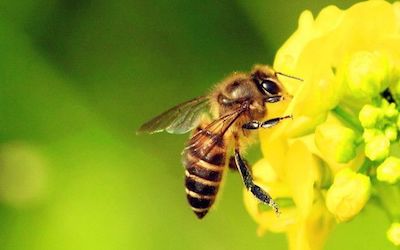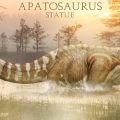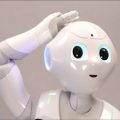PTE考生目前最大的问题之一就是练习题缺乏。除了有限的基本官方书(PLUS,Testbuilder, OG)之外就没有题了。很多英语基础不是很扎实的同学很难找到练习材料。悉尼文波雅思PTE培训学校专门为澳洲,尤其是悉尼、墨尔本的PTE考生准备了适合PTE听力阅读练习的科学60秒。各位PTE同学可以练习PTE听力中的summarise spoken text和PTE口语中的retell lecture,PTE听力口语-科学60秒-Frosty Moss练习记笔记技巧和复述。废话少说,下面开始:
听力内容:
60秒科学节目(SSS)是科学美国人网站的一套广播栏目,英文名称:Scientific American – 60 Second Science,节目内容以科学报道为主,节目仅一分钟的时间,主要对当今的科学技术新发展作以简明、通俗的介绍,对于科学的发展如何影响人们的生活环境、健康状况及科学技术,提供了大量简明易懂的阐释。
This is Scientific American — 60-Second Science. I’m Christopher Intagliata.
Springtime is flower season. And that includes some 90 million almond trees in California. It’s the largest pollination event in the U.S.—and beekeepers truck in two thirds of the nation’s captive honeybees to do the job. But for the last decade or so, the keepers have complained about failing colonies, with underdeveloped bees ejected from their hives.
Now a study identifies one possible culprits. Not a pesticide, but one of the many ingredients used alongside them. “So these are added into a formulation to enhance the efficacy of the active ingredients.” Julia Fine, an entomologist at Penn State. “It’s just called “other ingredients” and they often are the bulk of the formulated product.”
The chemical in question is known as an organosilicone surfactant. Fine and her colleagues fed the chemical to honeybee larvae over time, and exposed them to a cocktail of common beehive viruses. And they found that larvae exposed to the chemical and the viruses together appeared to die in greater numbers than did bees exposed to the viruses or the chemical alone—so there’s a possible synergistic effect that play. And the symptoms they saw mirrored the ones beekeepers observed in their hives. The study is in the journal Scientific Reports.
Fine and her team still have to determine how much of these chemicals actually make it into the bees’ food. But they do know hundreds of thousands of pounds of them are used in almond orchards each year. And elsewhere too. “Agriculture is just one use for organosilicone surfactants. It’s all over the place. So if we can find it has any effect in an organism, it will be relevant.”
Thanks for listening for Scientific American — 60-Second Science Science. I’m Christopher Intagliata.
墨尔本悉尼文波PTE原创首发
更多精彩请持续关注微信wenbo_tv3。





